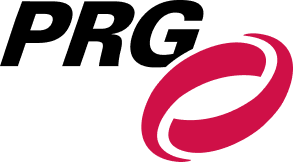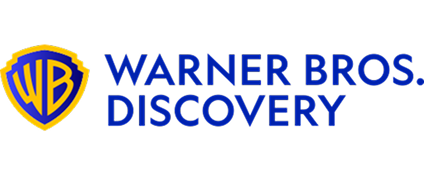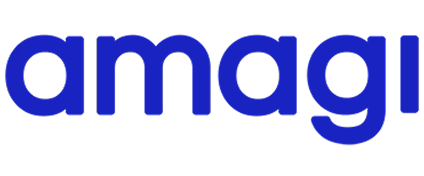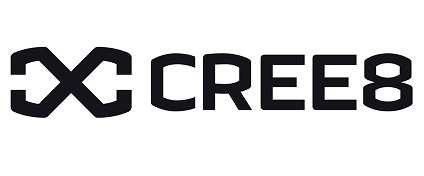How to Use Vitrina’s Projects Tracker for Daily Lead Generation
Introduction
The goal of a senior executive in M&E business development is simple: a consistent, high-quality, and scalable flow of leads. For service vendors—VFX houses, post-production studios, localization providers, and co-financiers—the sales pipeline must be fed by intelligence that is accurate, early-stage, and actionable.
The traditional approach to Daily Lead Generation—relying on trade news, generic email lists, or slow-to-update CRM data—is fundamentally broken, leading to wasted time chasing stale projects or sending generic pitches to the wrong person.
A modern, algorithm-driven strategy is required. This guide is a masterclass in a verified, 4-step workflow demonstrating How to Use Vitrina’s Projects Tracker for Daily Lead Generation, transforming your outbound sales function from a costly guessing game into a precise, repeatable machine.
It is a strategic mandate to shift your team’s focus from searching for leads to converting high-quality, pre-qualified opportunities delivered to your desk daily.
Table of content
Key Takeaways
| Core Challenge | Business development teams in the M&E vendor space lack real-time visibility and verified contact data for early-stage Film & TV projects. |
| Strategic Solution | Implement a systematic workflow using project intelligence and contact verification to trigger personalized outreach at the exact moment a project requires a vendor. |
| Vitrina’s Role | Vitrina’s Projects Tracker provides real-time alerts on 400,000+ projects and links them directly to 3M+ verified executive contacts, ensuring leads are timely and actionable. |
The Executive Pain Point: Why M&E Lead Generation Fails
For the M&E business development executive, success is contingent upon two variables: the quality of the project lead and the timeliness of the outreach. Today’s lead generation tactics consistently fail on both counts, resulting in high churn, low conversion rates, and frustrated sales teams. The core problem is data decay.
The Erosion of Lead Quality
B2B contact data degrades at an alarming rate, estimated by some analysts to be around 30% per year due as executives change roles or companies consolidate.
The M&E sector is particularly volatile in this regard. This means that a standard contact list purchased or aggregated six months ago is already fundamentally flawed. The common challenges for M&E vendors include:
- Stale Project Data: The project information is not granular enough. A project that is “Announced” is already too late for a vendor to bid on. The critical window for securing a production services contract is when the project moves from financing to the initial phases of pre-production—stages generic CRM data cannot track.
- Inaccurate Contact Mapping: The contact associated with the project in a generic database is often the wrong executive (e.g., the legal counsel instead of the Head of Post-Production). Poor lead quality is a direct result of this misalignment, leading to wasted personalized cold email outreach efforts.
- Generic Outreach: Without real-time, project-specific context, sales teams are forced to send generic pitches. This lack of personalization ensures the outreach is discarded immediately, compounding the issue of a long sales cycle.
The net effect is a vicious cycle where scarce sales resources are consumed by chasing dead-ends, reducing the team’s bandwidth for meaningful sales prospecting. This is not a human resource problem; it is an intelligence system failure that demands an algorithmic solution.
The Strategic Shift: Algorithmic Lead Generation
The solution to the vendor lead generation crisis is to abandon the ‘list-based’ approach entirely and adopt an ‘algorithmic-trigger’ model. This requires a dedicated platform that is not merely an address book, but a dynamic map of the global content supply chain, capable of generating an early warning signal at the precise moment a project enters a stage relevant to your service offering.
This new strategy centers on three key intelligence pillars:
- Project Life-Cycle Tracking: Monitoring every project across its 13 developmental stages (from Pitch/Development to Delivery). This allows a VFX studio to target a project at “VFX Planning” rather than waiting for a press release.
- Verifiable Executive Contacts: Linking the project status directly to the executive responsible for that phase (e.g., the Head of Localization at a major streamer for the “International Delivery” phase). This ensures outreach is targeted to the verified decision-makers.
- API-Driven Integration: Integrating this real-time data flow directly into the sales team’s CRM or outbound automation tool (HubSpot, Salesforce). This enables the timely, personalized outreach that is proven to improve conversions.
The platform that can execute this is Vitrina. It provides the central intelligence required to move away from fragmented data sources and into a clean, sales pipeline of high-quality, pre-qualified leads.
The 4-Step Workflow for Daily Lead Generation with Vitrina
Successfully operationalizing How to Use Vitrina’s Projects Tracker for Daily Lead Generation requires implementing a strict, 4-step daily process. This workflow ensures that your team always focuses on the highest-probability-of-conversion leads available in the M&E supply chain.
Step 1: Target Identification via Project Status
The first step is to filter the universe of 400,000+ Film & TV projects to identify those in your optimal sales window. This is the foundation of high-quality B2B sales prospecting.
- Action: Log into the Vitrina Projects Tracker and apply two critical filters:
- Target Competitor/Client: Filter by the Studios, Streamers, or Production Companies you wish to pursue.
- Project Stage: Filter for the Early Warning Signals—the precise stages where your service is required. For a Post-Production facility, this is VFX/Post Planning and Principal Photography. For a Co-Financier, it is Packaging & Financing.
- Outcome: You instantly narrow the focus from a half-million projects to a few dozen highly relevant leads that are actively in your procurement cycle. For example, a global localization company can filter for all Netflix projects with a confirmed production location in the EU, currently in the Post-Production or Delivery stage, indicating an immediate need for subtitling or dubbing services.
Step 2: Executive Mapping and Verified Contact Sourcing
After identifying the ‘hot’ projects, the next step is to pinpoint the exact decision-maker.
- Action: Navigate to the project’s dedicated Vitrina profile. The platform’s Supply Chain Map links project status to the executive responsible for that milestone. Utilize the 3M+ executive contacts database to find the Head of VFX, the Distribution VP, or the Co-Production lead. Critically, Vitrina’s data includes verified email addresses and a full deal track record for each executive, eliminating the data decay problem that plagues generic lists.
- Outcome: Your sales team receives a daily list of leads that contains the right project, the right service requirement, and the verified contact information of the person making the final buying decision. This move from generic titles to confirmed names drastically increases the open and response rate of all outbound efforts. This is a crucial step for content acquisition leads who need to bypass gatekeepers.
Step 3: Triggered Outreach with Real-Time Project Alerts
The conversion rate of a personalized pitch is directly tied to its timeliness. A relevant pitch delivered one day after a requirement arises is infinitely more effective than a generic email sent six months before or after.
- Action: Leverage Vitrina’s Real-Time Project Alerts. Once your target projects and executives are defined (Steps 1 & 2), set an alert for any movement (e.g., status change from Packaging to Pre-Production). Furthermore, the API & CRM integration allows this alert to automatically trigger a personalized email sequence in your outbound tool. The email subject line can be hyper-specific: “Noticed your new project,, just moved into Pre-Production—we have a tailored solution for your requirement.”
- Outcome: You achieve automated, personalized, and timely outbound lead generation. By basing your outreach on verifiable project movement, your team demonstrates true market intelligence, positioning your firm not as a cold caller, but as a strategic industry partner. This highly contextual personalization is essential for converting content acquisition leads into qualified opportunities. (For an overview of how these solutions connect, view our article on Media Supply Chain Mapping).
Step 4: Sales Pipeline Enrichment and Qualification
The final step is to ensure this high-quality data does not live in a silo and contributes directly to your sales forecast.
- Action: Use the Vitrina API to push the daily project and executive data directly into your CRM (e.g., Salesforce, HubSpot). The data points—Project Title, Current Stage, Required Service, and Verified Executive—serve as essential fields for lead scoring and qualification. This process, often called CRM enrichment, means your pipeline is always populated with the freshest, highest-quality M&E intelligence available.
- Outcome: The result is a self-cleaning, constantly refreshed M&E sales pipeline. Sales managers can trust the quality of the leads, and resources are focused solely on conversion, not on the arduous task of maintaining data quality. This allows for accurate forecasting and reliable target setting, giving management the confidence to invest in scaling the business development team.
Quantifying the Shift: From Stale Lists to a Live Sales Pipeline
The successful execution of this 4-step workflow delivers a quantifiable competitive advantage. The ability to source, verify, and act on real-time project alerts fundamentally reduces the cost of acquisition per lead while simultaneously raising the lead’s quality score.
For example, a traditional B2B lead generation strategy might require 200 generic cold calls to achieve 1 qualified meeting. By contrast, a Vitrina-enabled strategy allows the sales team to target 20 content acquisition leads whose project has just triggered a pre-production alert, leading to a higher volume of qualified meetings with significantly less effort.
This focus on accuracy over volume addresses the persistent industry problem of “unclear targeting.” The outcome is a demonstrable return on intelligence investment.
Vitrina provides the core data infrastructure for this transformation (To explore the full suite of services, you can learn more about the Vitrina Solutions). The system shifts business development from a manual, research-intensive function to a strategic, automated, and scalable sales intelligence capability.
Conclusion: Owning Your B2B Sales Funnel
For executives responsible for Daily Lead Generation in the M&E sector, the mandate is clear: the path to growth lies in verifiable, timely, and targeted data.
Adopting the 4-step workflow for How to Use Vitrina’s Projects Tracker for Daily Lead Generation is not merely a tool upgrade; it is a required strategic pivot.
By using project status as the key qualifier, linking it to verified executive contacts, and integrating the flow into your existing CRM, your organization can move from reactive sales to pre-emptive partnership building.
This algorithmic approach is the only way to build a reliable, high-converting M&E sales pipeline that stays ahead of the industry’s unprecedented speed and fragmentation.
Frequently Asked Questions
Vitrina enforces an anti-hallucination protocol where contacts are continuously cross-validated against official production registries, company filings, and proprietary supply chain data. This rigorous verification process, combined with a dedicated focus on 3M+ M&E professionals, ensures that the contact is the verified decision-maker for the specified project.
The tracker primarily solves the challenges of stale data and poor lead quality. It provides real-time project alerts to ensure vendors outreach is timely, and it maps the project directly to the executive in charge of the relevant service area (e.g., post-production or distribution), eliminating wasted effort on the wrong contact.
Yes. Vitrina’s data is fully available via API, enabling seamless and scheduled integration with major CRM platforms such as Salesforce and HubSpot. This allows for automated CRM enrichment, ensuring that the project data and verified contacts flow directly into your sales pipeline for qualification and forecasting.
The Project Tracker allows you to monitor movement across its 13 lifecycle stages. By setting an alert for a change that is relevant to your business (e.g., a project moving to the VFX/Post Planning stage), you can create an email that references this specific, non-public event, demonstrating a level of insight that instantly elevates your pitch above generic cold emails.

























